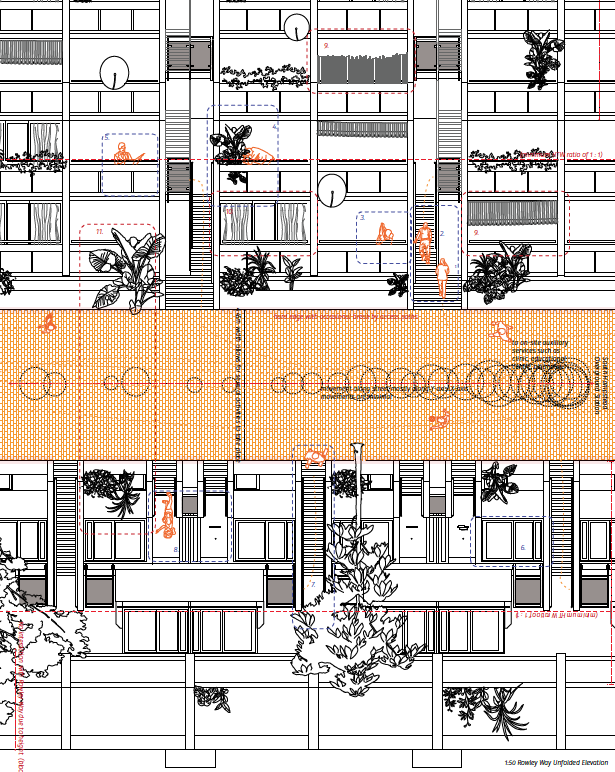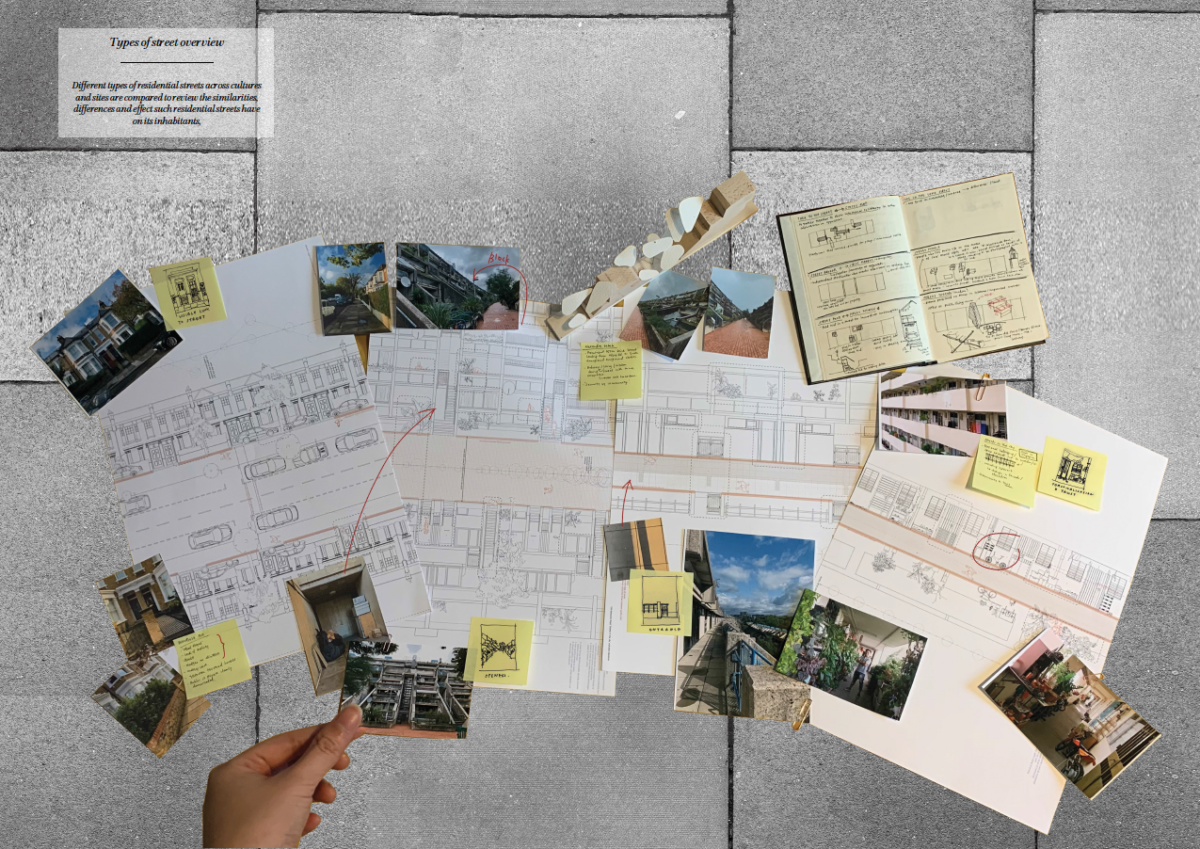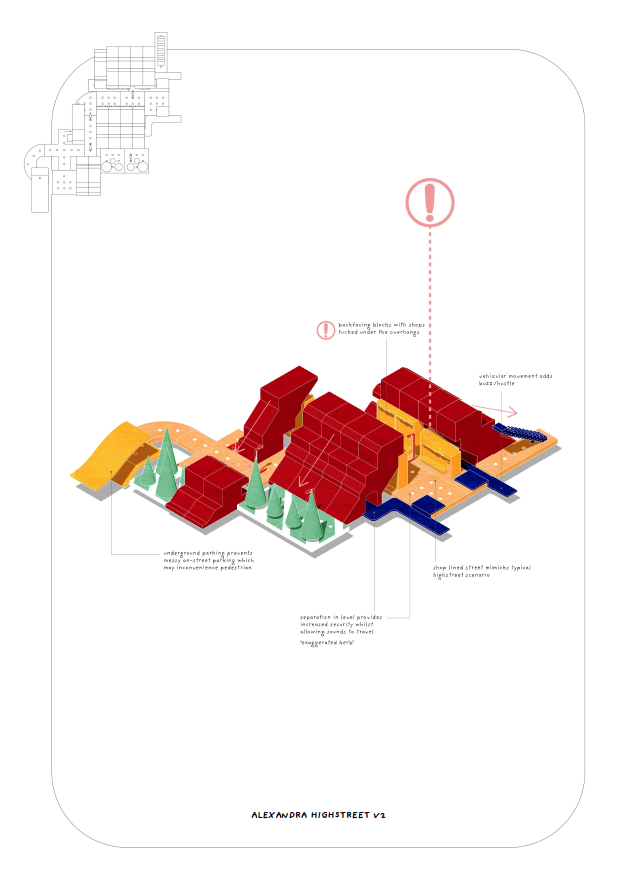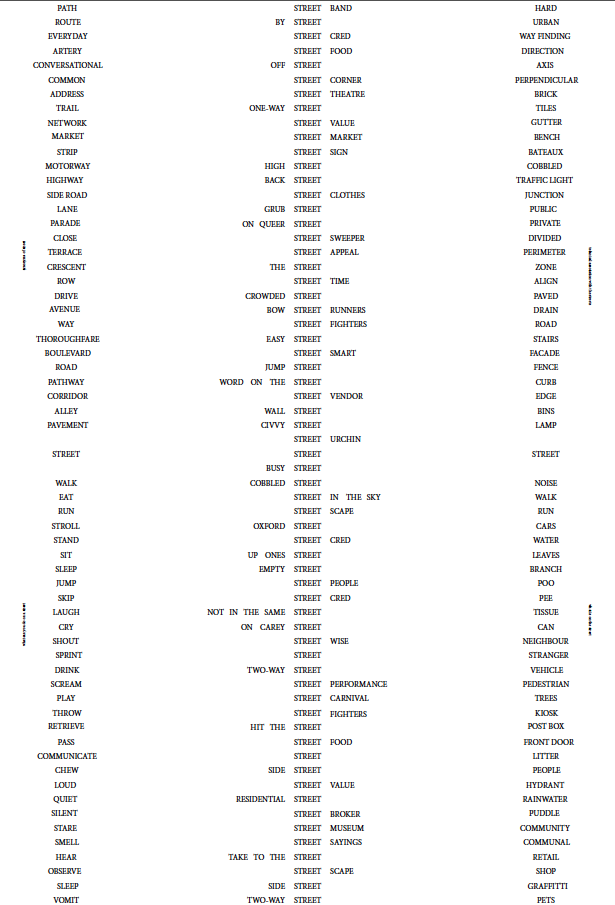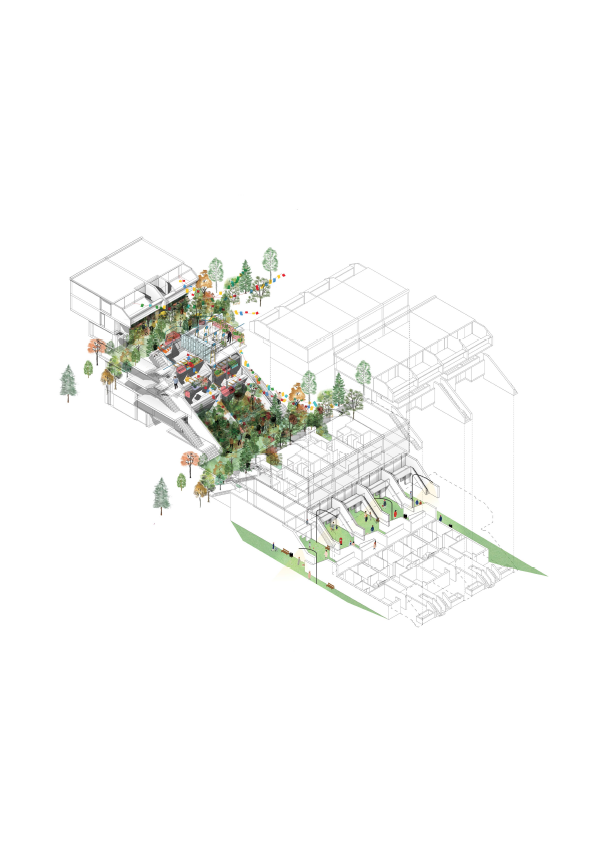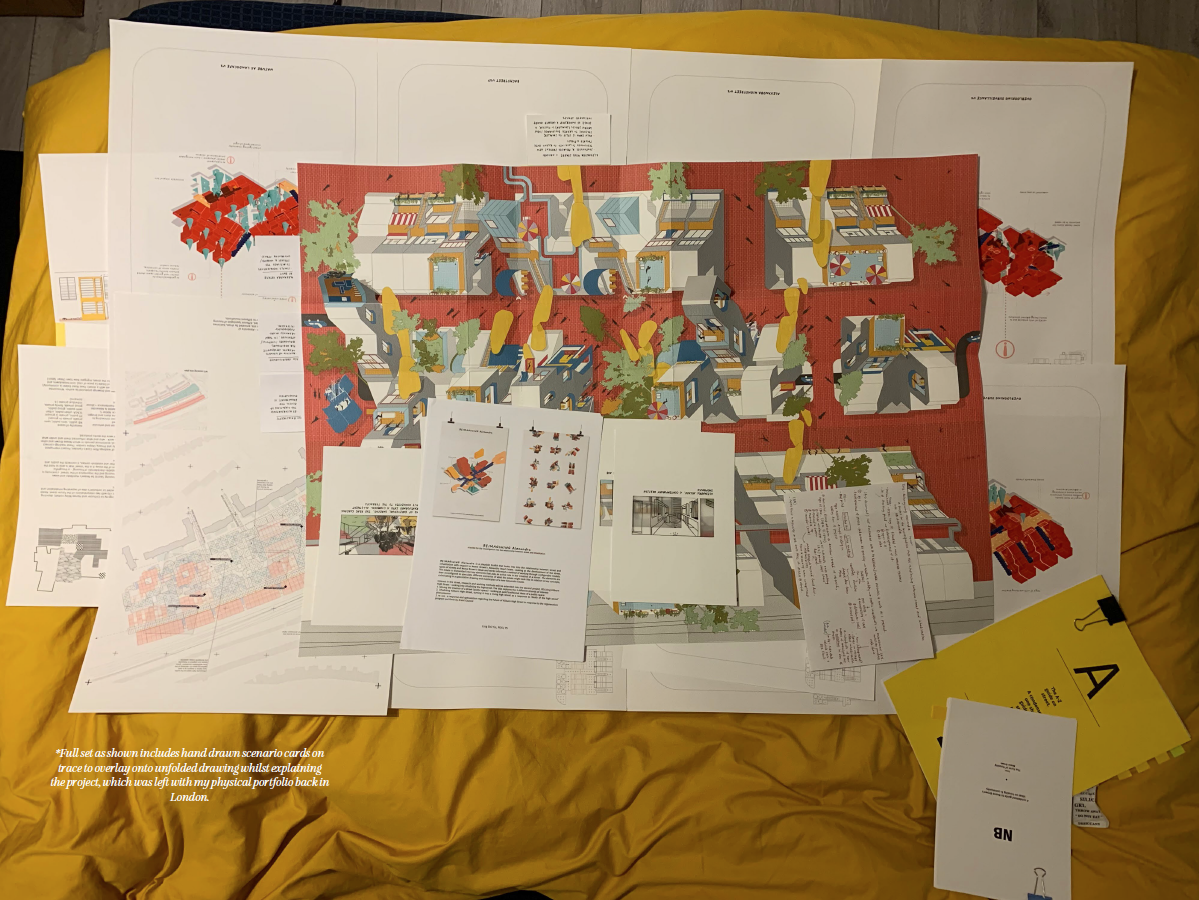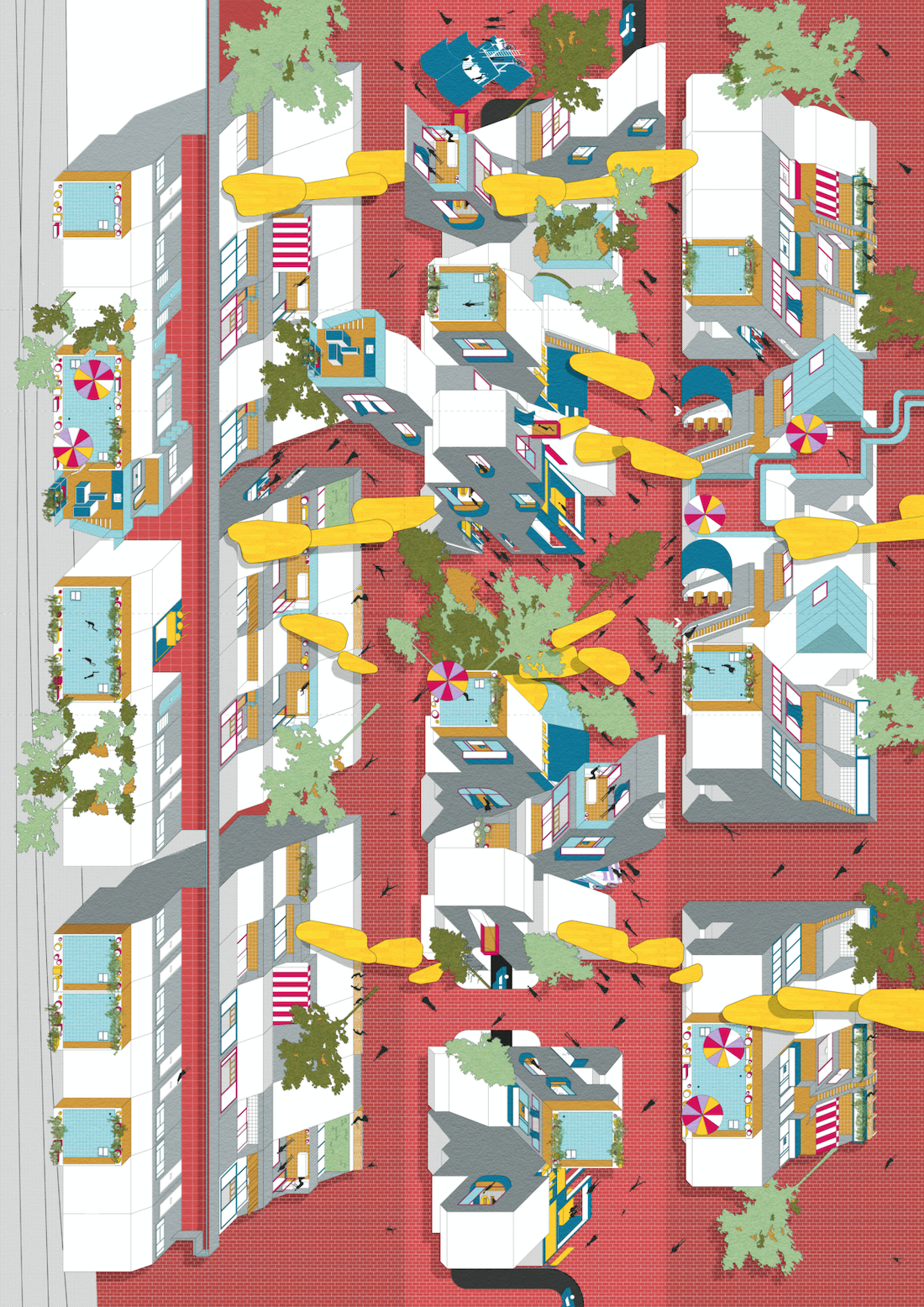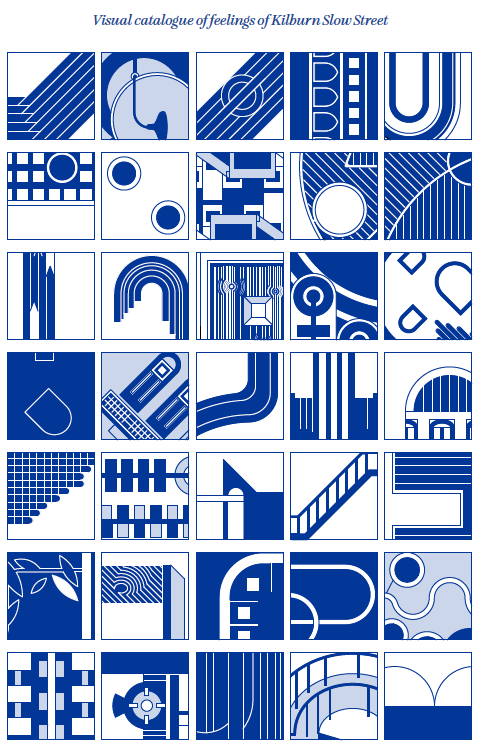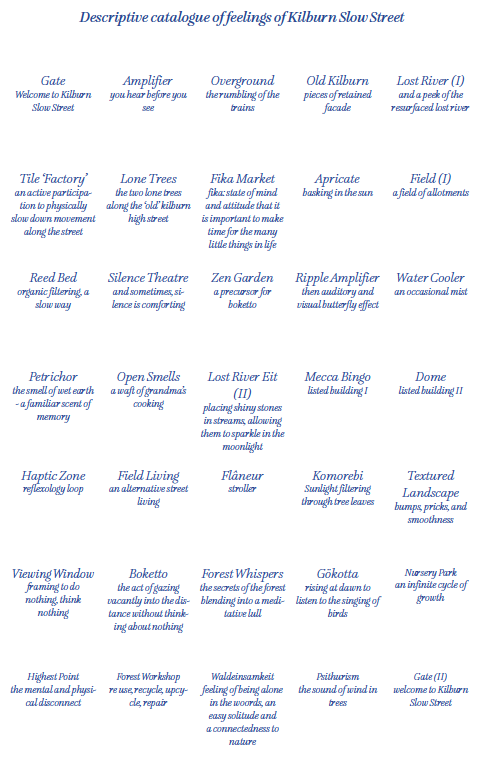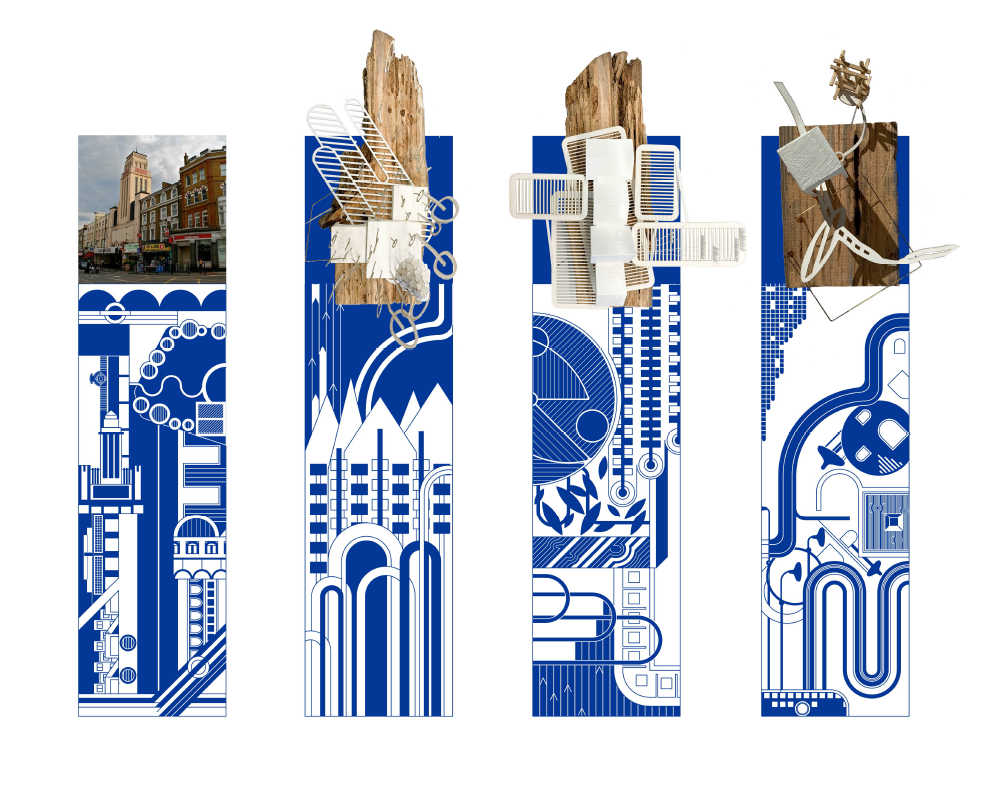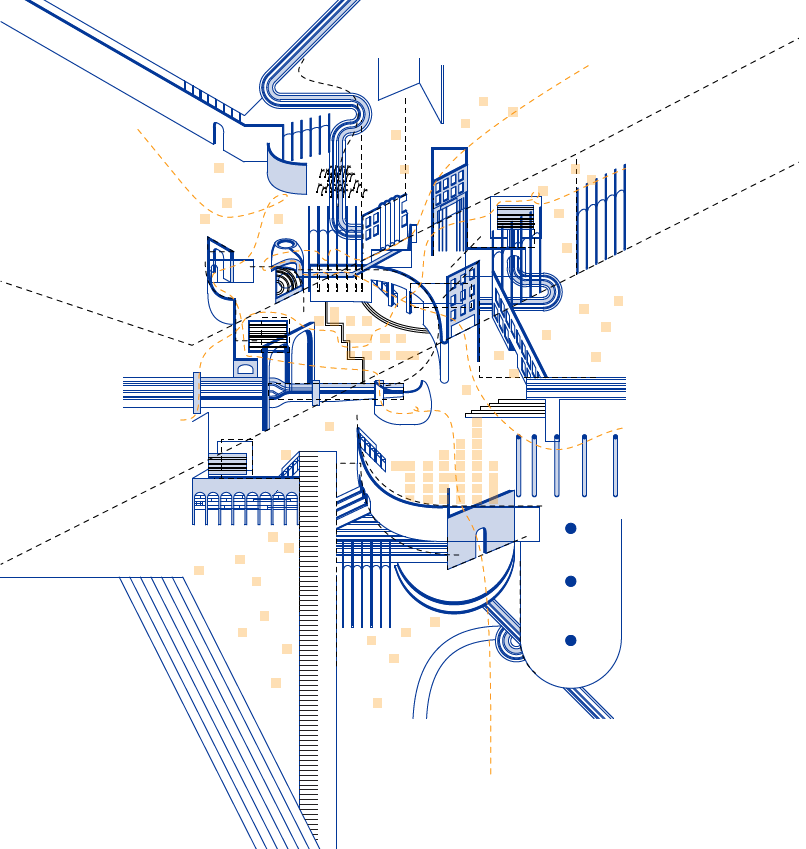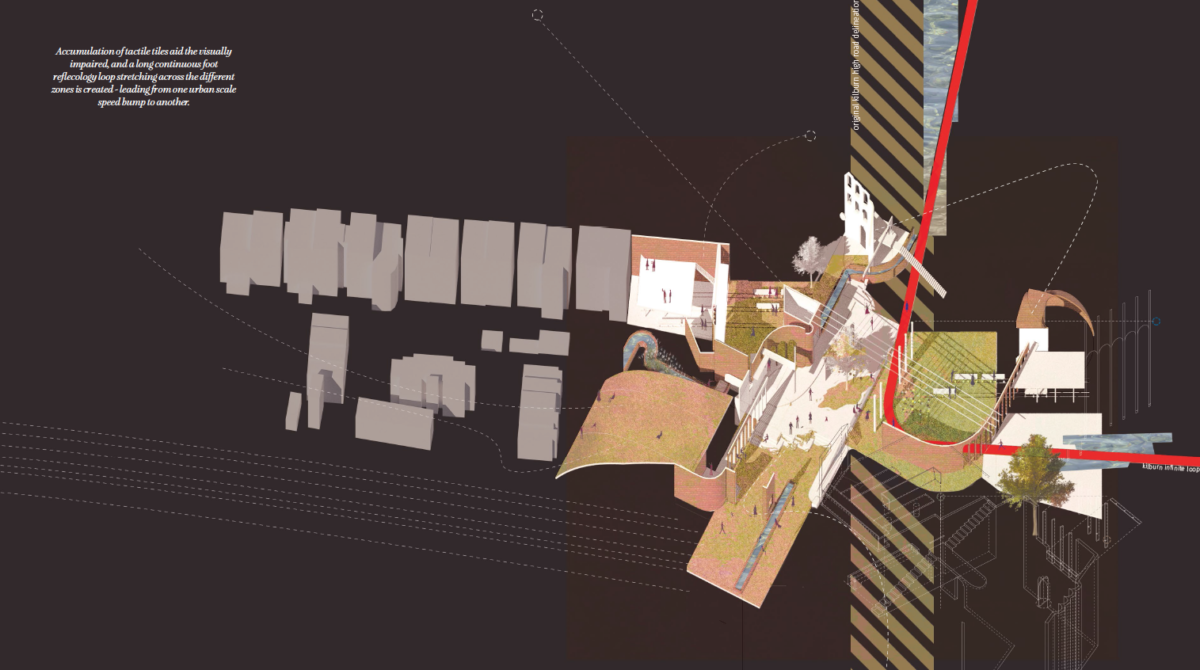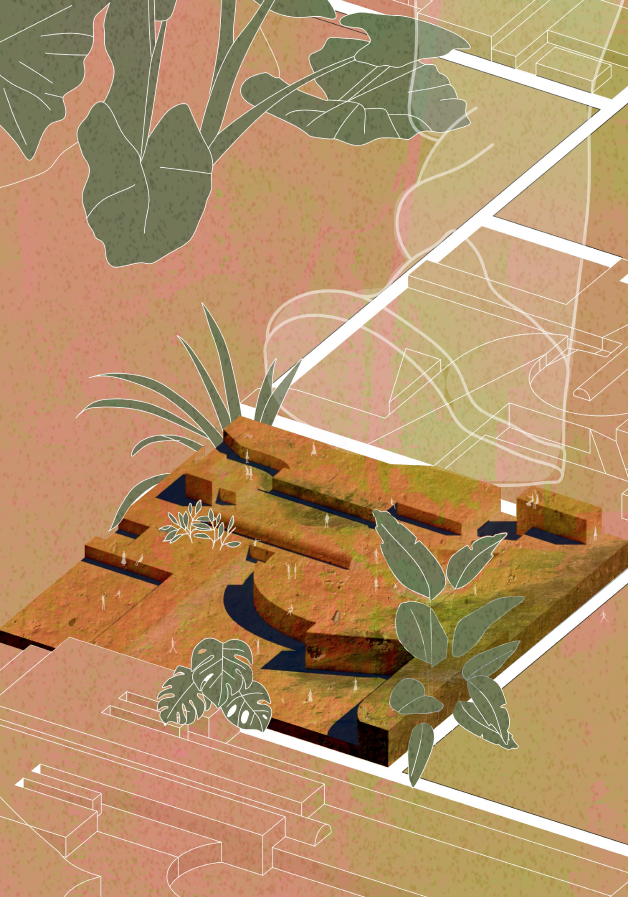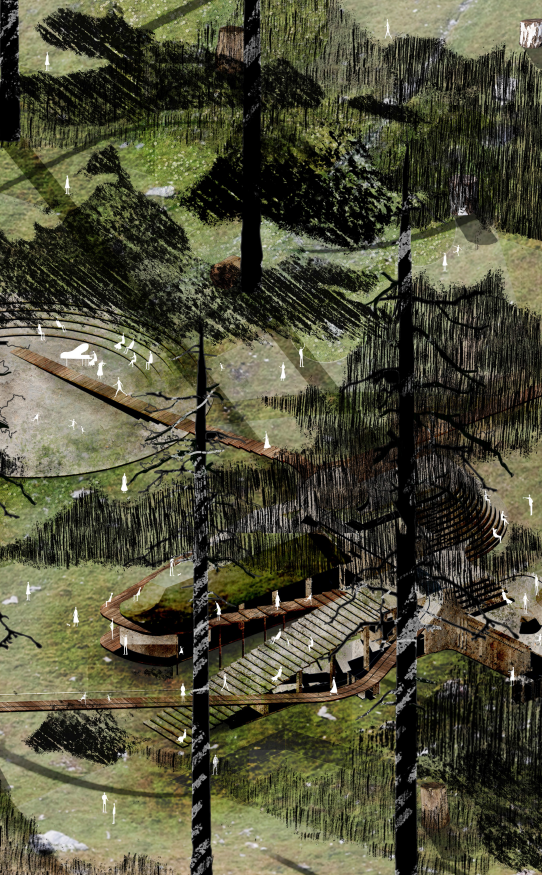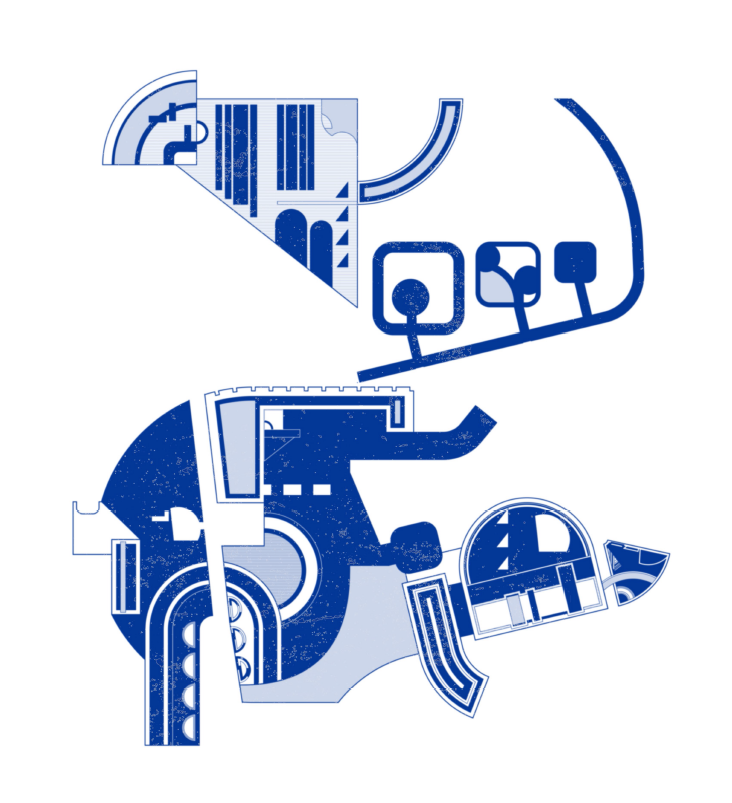

Kilburn Slow Street
A visual narrative through a play of scales, focusing on the ‘non-physical’ aspects of what makes a street.
A two-part investigation into the overarching question of: what makes a street’, term 1’s investigation into re-imagining Alexandra Road Estate looked at the physical elements of the street while Term 2’s project – Kilburn Slow Street, is a spatial exploration of an alternative narrative for the future high street, focusing on the ‘non-physical’ aspects of the street, and associating with the ideas of deceleration and slowness. The ‘death of the high street’ phenomena is at its peak and the movement from offline to online retail has opened an important discussion of what the future high street can be. The high street which has typically been associated with circulation and retail, will now be synonymous with ‘place’, history, culture and the people.
The structure of high streets has roughly remained the same since its inception – a set hierarchy and segregation of buildings, pavement and roads. A recent change to this preconceived notion of the street structure is the implementation of the ‘shared space’ concept on Exhibition Road, resulting in a kerb-free street shared by both motorists and pedestrians. Set in Kilburn High, Kilburn Slow Street takes this concept a step further by speculating a new street typology shared by infrastructure, people and nature, where the ‘street’ unites, rather than divides programmatic spatial relations.
Macro-Architecture, Micro-Urbanism: the project explores a singular set of 1:1 tiles in various scales to re-imagine the new high street – the tile as an object, a spatial moment, a building plan and masterplan.

